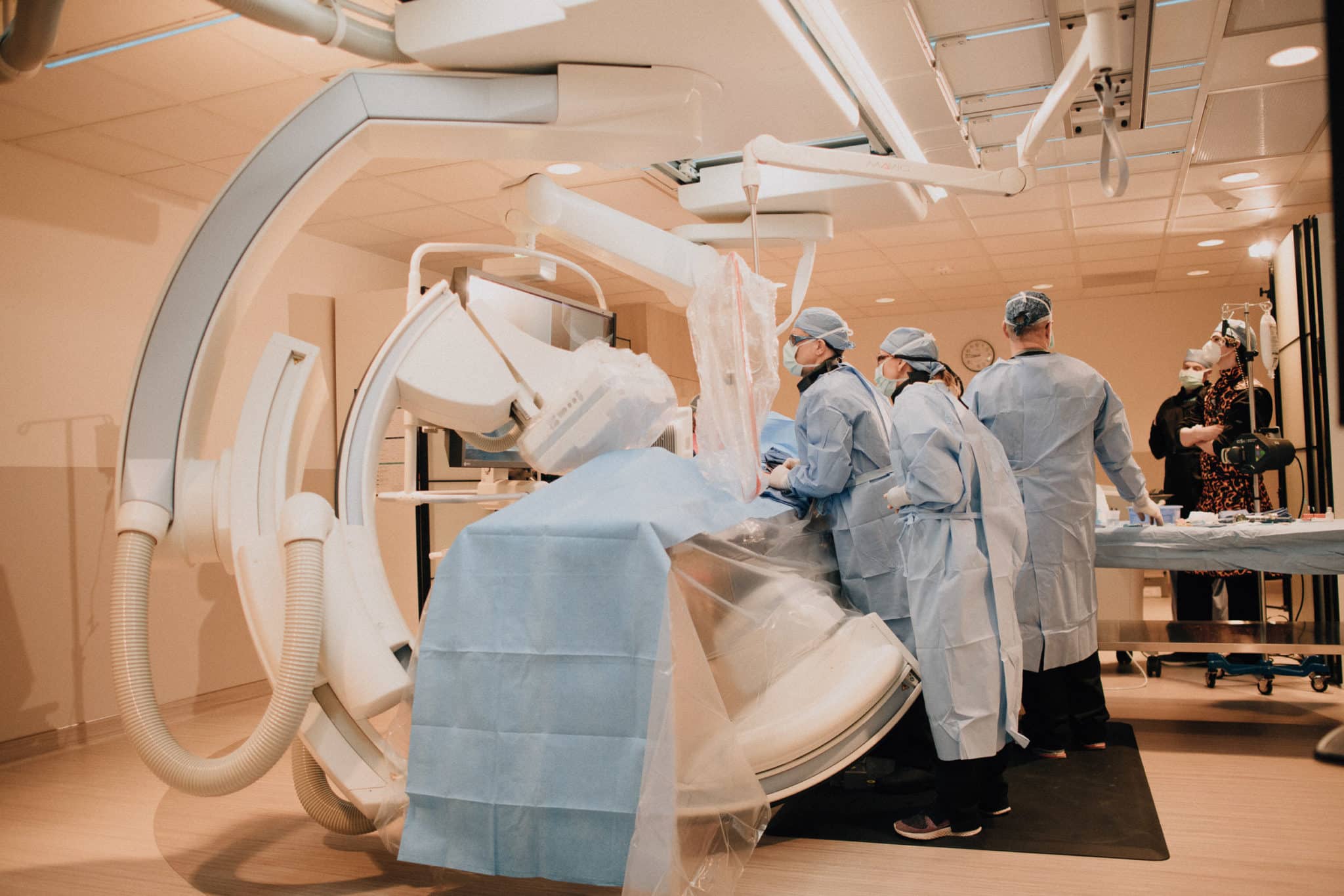
HEMORRHOID ARTERY EMBOLIZATION
- You have been diagnosed with internal hemorrhoids, grade 1, 2 or 3
- Dietary measures, medication or non-surgical minimally invasive methods were not successful
- You did not benefit from a surgical treatment
QUICK & SAFE PROCEDURE
Takes about an hour with no hospital trip needed
SHORTER RECOVERY TIME
Patients typically return to regular activities the next day
LESS RISK OF COMPLICATIONS
90% of patients have a reduction in bleeding
MEET THE SPECIALISTS TO THE SPECIALISTS

MICHAEL CUMMING, MD
Dr. Cumming is a nationally-recognized interventional radiologist. His embolization techniques have been presented at the Global Embolization (GEST) meeting.

PETER BRETZMAN, MD
Dr. Bretzman has over 25 years of experience solving complex medical problems using minimally invasive imaging guided techniques. His focus is finding the most efficient solution for patients.
UNDERSTANDING KYPHOPLASTY AND VERTEBROPLASTY PROCEDURES
Hemorrhoid embolization is a minimally-invasive treatment for internal hemorrhoids that offers relief from rectal bleeding, pain, irritation, and itching. VIE interventional radiology experts use state-of-the-art medical equipment to block off the blood supply to hemorrhoids using tiny particles and coils. The procedure only takes about 1 hour and has a very fast recovery time.
Hemorrhoid embolization is an excellent option if:
- You have internal hemorrhoids, grade 1, 2 or 3
- Dietary measures, medication or non-surgical minimally invasive methods were not successful
- You did not benefit from a surgical treatment
Recently published data shows that hemorrhoid embolization is very successful in reducing bleeding in over 90% of patients. Patients also experience improvement in quality of life and reduction in pain. The benefits have been shown to last for at least 1 year.
Hemorrhoids are common and occur in approximately 50% of people during their life with a peak incidence at the age of 45 – 65 years. They are caused by an increase in pressure in the lower rectum by the following reasons: straining, sitting for long periods, spinal cord injury, chronic constipation or diarrhea, anal intercourse, family history of hemorrhoids, and excessive exercise.
Eating high fiber food, drinking enough fluid, and exercising can help prevent the occurrence of hemorrhoids. Avoid straining when sitting on the toilet, and in general, avoid sitting for long periods of time.
WHAT ARE THE BENEFITS OF HEMORRHOID EMBOLIZATION?
Fortunately, there are other treatment options for those suffering from internal hemorrhoids. Embolization has shown great success at treating the affected area which stops blood flow at its source without surgery or any invasive procedure like banding.
Dr. Cumming and Dr. Bretzman will partner with you and/or your existing care team (ex: primary care) to determine if you’re a candidate for hemorrhoid embolization.
Hemorrhoidal artery embolization patients report having very little to no pain. This minimally invasive, extremely safe, outpatient procedure requires no trip to the hospital. There is no anal trauma as there are no instruments placed in the anus with most patients returning to activity the next day.


HOW IS HEMORRHOID EMBOLIZATION PERFORMED AND AM I A CANDIDATE?
A CT Angiography is performed before treatment begins to ensure the procedure is suitable. A small incision in the leg allows a tiny catheter to be guided to the artery for embolization.
If dietary changes, medication, non-surgical or surgical methods haven’t worked, or if you have grade 1, 2 or 3 internal hemorrhoids, you may be a candidate for embolization.
You should not undergo hemorrhoid embolization if you have a grade 4 hemorrhoid, a history of colorectal surgery, or chronic anal fissures.
To be a candidate for a kyphoplasty or vertebroplasty, your pain must be related to the vertebral fracture, and must not be due to other problems. Patients with disk herniation, arthritis, or stenosis (narrowing) related pain will not be candidates for this procedure. Imaging tests — such as spinal x-rays, bone scans and computed tomography (CT) or magnetic resonance imaging (MRI) scans — might be ordered to confirm the presence of a vertebral fracture.
HERE'S WHAT YOU CAN EXPECT FROM YOUR VISIT:
- CONSULTATION: Symptom review and health history discussion.
- TREATMENT PLAN: Dr. Cumming and Dr. Bretzman provide a definitive diagnosis that is tailored to each patient’s needs with an option for treatment recommendations based on symptoms, exams & imaging findings.

